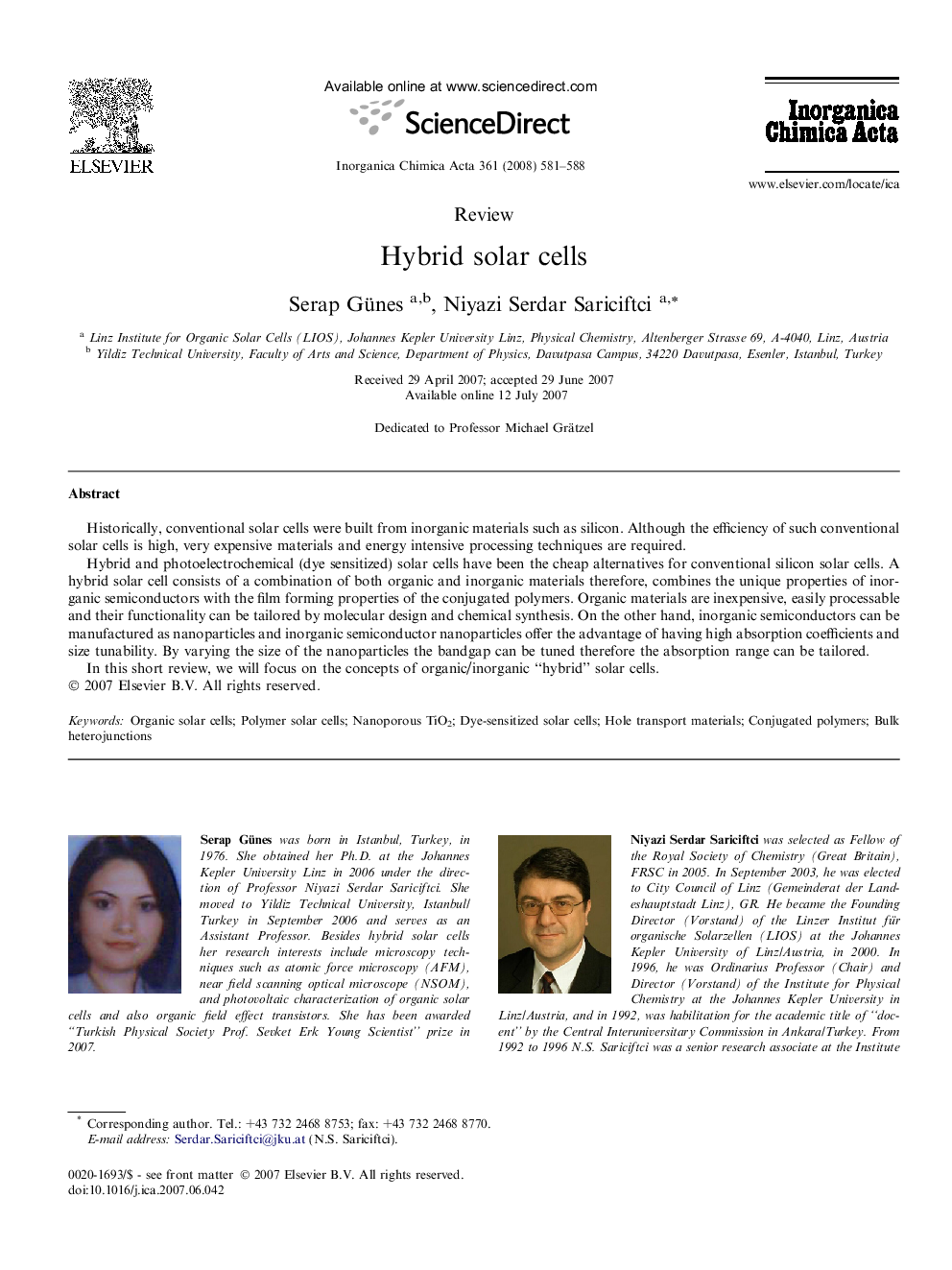| کد مقاله | کد نشریه | سال انتشار | مقاله انگلیسی | نسخه تمام متن |
|---|---|---|---|---|
| 1309225 | 975199 | 2008 | 8 صفحه PDF | دانلود رایگان |

Historically, conventional solar cells were built from inorganic materials such as silicon. Although the efficiency of such conventional solar cells is high, very expensive materials and energy intensive processing techniques are required.Hybrid and photoelectrochemical (dye sensitized) solar cells have been the cheap alternatives for conventional silicon solar cells. A hybrid solar cell consists of a combination of both organic and inorganic materials therefore, combines the unique properties of inorganic semiconductors with the film forming properties of the conjugated polymers. Organic materials are inexpensive, easily processable and their functionality can be tailored by molecular design and chemical synthesis. On the other hand, inorganic semiconductors can be manufactured as nanoparticles and inorganic semiconductor nanoparticles offer the advantage of having high absorption coefficients and size tunability. By varying the size of the nanoparticles the bandgap can be tuned therefore the absorption range can be tailored.In this short review, we will focus on the concepts of organic/inorganic “hybrid” solar cells.
Historically conventional solar cells, with high efficiency, built from inorganic materials such as silicon require expensive materials and intensive processing techniques. Hybrid – consisting of a combination of both organic and inorganic materials and hence combining the unique properties of inorganic semiconductors with film forming properties of conjugated polymers – and photochemical solar cells have been cheap alternatives for conventional silicon solar cells. Organic materials are inexpensive, easily processable and their functionality can be tailored by molecular design and chemical synthesis, whereas inorganic semiconductors can be manufactured as nanoparticles and these offer the advantage of having high absorption coefficients and size tunability. The bandgap can be tuned by varying the size of the nanoparticles, hence the absorption range can be tailored.Figure optionsDownload as PowerPoint slide
Journal: Inorganica Chimica Acta - Volume 361, Issue 3, 15 February 2008, Pages 581–588